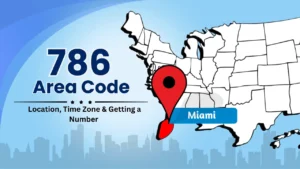Macy’s Closing: What It Means for Retail, Shoppers, and the Future of Department Stores
The American retail landscape is undergoing a seismic shift, and one of its most iconic names is at the center of it all. If you’ve recently searched “Macy’s closing,” you’re not alone.
In this comprehensive guide, we’ll break down why Macy’s is closing stores, what it means for consumers and employees, and how the retail industry is changing in 2025 and beyond.
With its flagship store in Herald Square, New York City, Macy’s has long been synonymous with American retail, fashion, and even culture — think Macy’s Thanksgiving Day Parade.
- Declining foot traffic in malls
- Increased competition from online retailers like Amazon
- Rising operational costs and labor challenges
These factors have combined to put immense pressure on Macy’s business model, which historically relied on sprawling department stores located in malls and urban centers.
Macy’s Closing Stores: The Latest Announcements in 2025
In early 2025, Macy’s announced another wave of store closures as part of its ongoing strategy to streamline operations and improve profitability. According to the company’s official statement, 50 stores across the U.S. will shut down by the end of the year.
These closures are part of Macy’s multi-year turnaround plan, initially launched in 2020, which includes:
- Shutting down underperforming stores
- Expanding digital capabilities
- Focusing on smaller, more efficient formats
- Investing in off-mall locations and luxury segments like Bloomingdale’s and Bluemercury
Macy’s CEO Tony Spring stated, “We are not exiting retail — we are reimagining it. Our goal is to meet customers where they are, whether that’s online, off-mall, or in high-performing flagship locations.”
Which Macy’s Locations Are Closing?
While Macy’s hasn’t released a complete list of all the stores shutting down in 2025, several regional closures have already been confirmed in the following areas:
- California: Locations in Sacramento and Fresno
- Texas: Select stores in Houston and Dallas
- Illinois: Two suburban Chicago locations
- Florida: Several stores in Miami-Dade and Broward counties
- New York: Upstate locations in Rochester and Albany
These stores were identified based on declining sales, underperforming mall traffic, and overlap with other Macy’s locations nearby.
What This Means for Macy’s Employees
Macy’s store closures aren’t just affecting shoppers; they’re also having a significant impact on employees. With each closure, hundreds of jobs are at risk — from retail sales associates to management and support staff.
The company has pledged to offer severance packages and job placement assistance. In some cases, employees may be relocated to other nearby stores or offered roles in Macy’s growing e-commerce division.
Still, the reality is that many longtime workers will lose their jobs, adding to concerns about employment in the struggling retail sector.
The Bigger Picture: Why Are Traditional Department Stores Struggling?
Macy’s isn’t the only one feeling the pinch. The entire department store industry is in decline. JCPenney, Sears, and Kohl’s have all faced financial trouble in recent years. The reasons include:
1. E-Commerce Dominance
Online shopping, especially through platforms like Amazon, has become the go-to for millions of Americans. E-commerce offers convenience, fast delivery, and competitive prices — advantages that traditional stores have struggled to match.
2. Shifting Consumer Preferences
Younger shoppers are more interested in experiences over possessions, value-based purchasing, and niche or specialty retailers. Big department stores are seen by many as outdated or impersonal.
3. Mall Decline
Most Macy’s stores are anchor tenants in large malls. But as mall traffic declines, so does foot traffic to Macy’s. The decline of malls is a major factor in Macy’s closing strategy.
4. Economic Pressures
Inflation, rising wages, and increasing rents have made it more expensive to operate large-scale retail locations. Many stores are simply no longer profitable.
Macy’s Strategy Moving Forward
Despite the closures, Macy’s isn’t throwing in the towel. The company is pivoting in several key ways:
1. Smaller Store Formats
Macy’s is testing smaller, more curated stores like “Market by Macy’s” in suburban shopping centers and lifestyle plazas. These stores are designed to be more accessible and focused on popular categories like fashion, beauty, and home.
2. Digital-First Approach
The brand is investing heavily in digital transformation — better apps, AI-driven personalization, and faster delivery options. In 2024, nearly 40% of Macy’s total sales came from online orders, and that trend is expected to grow.
3. Luxury and Beauty Expansion
These segments have shown strong performance and will be a core part of Macy’s future growth.
How Shoppers Can Adapt
If your local Macy’s is closing, here are a few tips to help you adapt:
- Watch for liquidation sales: Deep discounts are often available during store closure events.
- Explore Macy’s online: The website often features exclusive online deals and free shipping offers.
- Find nearby alternatives: Other Macy’s-owned stores like Bloomingdale’s may offer similar products.
- Sign up for digital updates: Macy’s app and email newsletter often include coupons and loyalty perks.
Final Thoughts: Is This the End of Macy’s?
But it is undergoing a dramatic reinvention. The company’s decision to close stores is a response to shifting retail trends and economic realities.














Post Comment